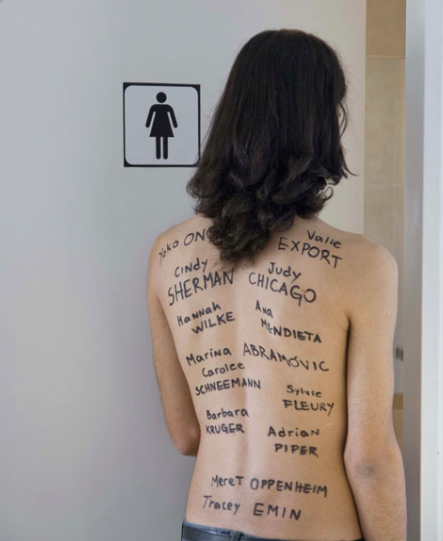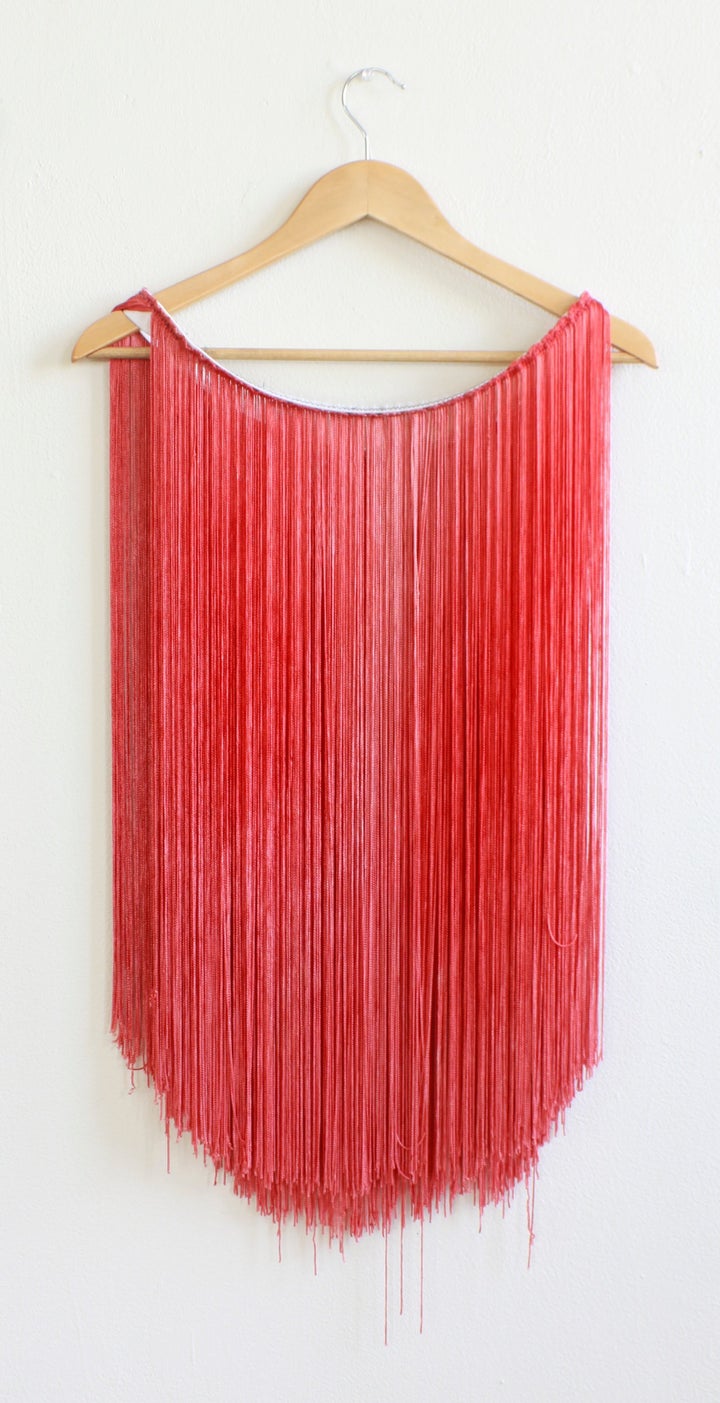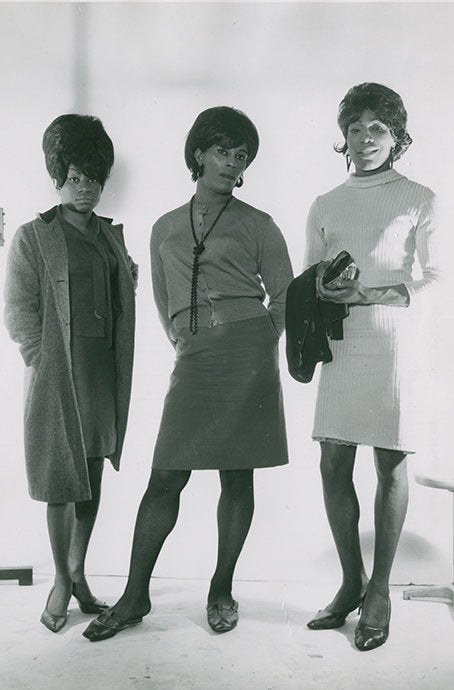
A new exhibit is on display at The Cooper Union in New York City that brings together the work of transgender artists and the famed Kinsey Archives.
Called "Bring Your Own Body: Transgender Between Archives & Aesthetics," the event is curated by Jeanne Vaccaro, a postdoctoral fellow in gender studies at Indiana University and a scholar at the Kinsey Institute, and Stamatina Gregory, associate dean of the School of Art at The Cooper Union. It opens Oct. 14 is slated to run through Nov. 14.
According to a press release, the "the exhibit historicizes the sexological and cultural imaginary of transgender through a curatorial exploration of the Kinsey Archives and the burgeoning movements for transgender expression from the turn of the 20 century."
The list of artists associated with "Bring Your Own Body" is extensive and includes Justin Vivian Bond, Flawless Sabrina, Juliana Huxtable, Chris Vargas and Zackary Drucker, among others.
The Huffington Post chatted with Vaccaro and Gregory this week about their vision for "Bring Your Own Body" and the narrative being constructed through their curatorial work.

The Huffington Post: What was the overarching concept for "Bring Your Own Body"?
Jeanne Vaccaro: The exhibit explores the way transgender identity is formed between an archive and an aesthetic. In other words, between an official history or record and the performative and artistic; between what is decreed by doctors, psychiatrists, and legislators, and what is experienced and lived. The space between is the space of power relations in tension and in movement.
Stamatina Gregory: Mounting this exhibition at the School of Art at the Cooper Union is important because we want to expand the art historical canon and foreground themes of pedagogy and politics. For a small art school we have a group of committed queer and trans students inviting artists and creating programs. For example, inviting Dark Matter to campus. Juliana Huxtable, who is giving a reading for the exhibition, is also doing studio visits with students. Our students in the School of Art have a critical interest in the intersections of art-making and social justice, and they take tremendous initiative in bringing artists and creating dialogues here. Our hope is that this project and our programming add to the conversations that are already happening at Cooper.

Vaccaro: We are not interested in offering definitions as a whole, and in fact to do so when it comes to any identity is dangerous. We wanted to present a modern history of transgender using archival collections, but it isn’t possible to exhibit that kind of material without feeling the violent weight of sexological and diagnostic histories and their continued reverberations in foreclosing transgender subjectivity. In order to exhibit that material we had to do so in dialogue with contemporary art and world making efforts by transgender and genderqueer artists.

What do you feel like this exhibit contributes to the increasingly mainstream conversation about gender identity?
Vaccaro: It certainly complicates the mainstream narrative and illustrates not just the multiplicity of transgender identities but the many forms of expression those identities take. Popular media representation often contributes to a pathological and medicalized view of trans experience. With art and performance we can show another side of the story -- including the rage of confronting misrepresentation in the media.
Gregory: The historical materials we are exhibiting from the archives of the Kinsey Institute and the University of Victoria Transgender Archives demonstrate the origins of transgender in American midcentury sexology, which is something the mainstream public has very little awareness of. Photography, correspondence, drawings, ephemera, and printed matter culled from the archives highlight the intersection of historical taxonomy and lived experience. Transgender is neither new nor finished, despite recent and unprecedented visibility in popular media. In fact, a return to the archive offers a critical historical perspective. Police mug shots of transgender women of color imprisoned in the 1960s for sex work and female impersonation highlight the ethical and long overdue need for an intersectional and abolitionist transgender movement. Many parallels can be drawn between the sensational media coverage of Caitlyn Jenner and the New York Daily News headline of Dec. 1, 1952 proclaiming “Ex-GI Becomes Blonde Beauty: Operations Transform Bronx Youth.” Christine Jorgensen in fact intersected with Alfred Kinsey himself, visiting the Institute in 1953 so he could take her sex history.

How did you pick these artists?
Vaccaro: Selecting artists was a near impossible task, especially as the list of talented and visionary transgender artists is an expansive one. Ultimately we made selections based on several factors, one key one being the artist’s relation to an archive. In many cases this was explicit, as in the case of Chris Vargas, who we commissioned to make a new work using materials from a research visit to the Kinsey archives. Under the rubric of his “imaginary” Museum of Transgender Hirstory and Art, he has created a takeaway collage and digital projection exploring the news media headlines about gender transformation from the 1940s, '50s, '60s and on, based on the scrapbooks of Louise Lawrence. This new work performatively harnesses and plays with an inherited set of representations and found objects. Of his experience in the archives Vargas said, “I was struck by how the sensational approach to gender identity has not shifted significantly over the past 60 years. I was excited to work with the scrapbooks of self-identified transsexual Louise Lawrence who had a generous relationship and intellectual exchange with Alfred Kinsey about the evolving notions of gender in the mid-century.”
Gregory: We also felt it was necessary to draw attention to an artistic legacy and to an art historical through line from artists such as Genesis Breyer P Orridge and Vaginal Davis to, for example, downtown performer, artist and activist Chloe Dzubilo (1960-2011). Flawless Sabrina and Zackary Drucker have strong ties to one another. The work of young artists Mark Aguhar (1987-2012) and Effy Beth (1989-2014), both tragically no longer with us, were galvanizing for so many queer and trans people on digital platforms like Tumblr in the U.S. and South America, and we were privileged to have the blessing of their families to exhibit their work and continue to share it with a wider audience.
What do you want viewers to take away from "Bring Your Own Body"?
Vaccaro: While the exhibition gathers work under an expanded umbrella of transgender, it does so without identitarian claims. In that way, and in many others, B.Y.O.B. seeks to pose more questions than it does answers. That can be said of most “good art,” and it can certainly be said of identity. Of course, we hope people learn from the work, but most importantly -- and in the face of the crisis of violence facing trans people -- we want to create a space to celebrate the visionary and imaginative spirit of transgender liberation.

"Bring Your Own Body" is on display at The Cooper Union from Oct. 14 through Nov. 14. Head here for more information.
Also on HuffPost:



